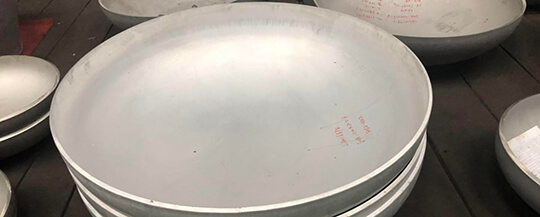With the development of our country’s petroleum and chemical industries, aluminum alloy pressure vessels are more and more used, with high pressure, low temperature, Features of large thickness. Now we introduce a large thick-walled aluminum alloy pressure vessel manufactured by our factory.
Main material and structural characteristics
Main body material: 5083-H112, chemical composition meets the requirements of GB/T 3190-2008 "Chemical composition of wrought aluminum and aluminum alloys", and mechanical properties meet GB/T 3880.2-2012 "General industrial aluminum and aluminum alloy plates Part 2: "Mechanical Properties"; structural features: DN1700×50—32480, with a sieve plate structure inside.
Cutting and groove processing
The scribing and blanking of the aluminum plate should make the maximum strain of the component in the rolling direction of the plate. Cutting should be done by sawing or plasma cutting.
The edge processing of the plate adopts the edge planing method to remove the margin and process the groove. The groove surface after the edge processing shall not have defects such as cracks, delamination, slag inclusion, etc. The expanded length of the cylinder body is matched with the size of the head. After planing, the adjacent edges of the blank must be vertical, the diagonal deviation ≤ 2mm, and the roughness ≤ Ra12.5.
Shell forming
The cylinder body is formed by a four-roller plate bending machine, taking into account the problem of straight edges after the cylinder body is formed, such as the remaining head is reserved for the cylinder body forming, and the later preparation of the bevel requires a lot of work. In the end, we chose to roll the plate without leaving the remaining head, the blank was the net size, and the rolling method without leaving the straight edge was adopted. The straight edge of the thick aluminum plate was solved by controlling the diameter of the initial coil to be slightly larger than the inner diameter of the cylinder and preserving the long straight edge. problem. When pairing, the amount of misalignment of the alignment is controlled to be ≤2.4mm, and the amount of misalignment at the end is ≤0.5mm. The oxide scale, iron filings and other impurities on the roll of the bending machine should be cleaned up before forming.
Head forming
The stamping and thinning amount in the forming process of the head is determined by referring to Appendix J of GB/T25198-2010 "Heads for Pressure Vessels". The thickness of the head is determined according to the manufacturing process of the head to ensure that the thickness after the forming of the head is not less than the design requirement Minimum forming thickness.
The head is formed by hot pressing, with an initial pressure temperature of 480°C and a final pressure temperature of 380°C, followed by air cooling.
